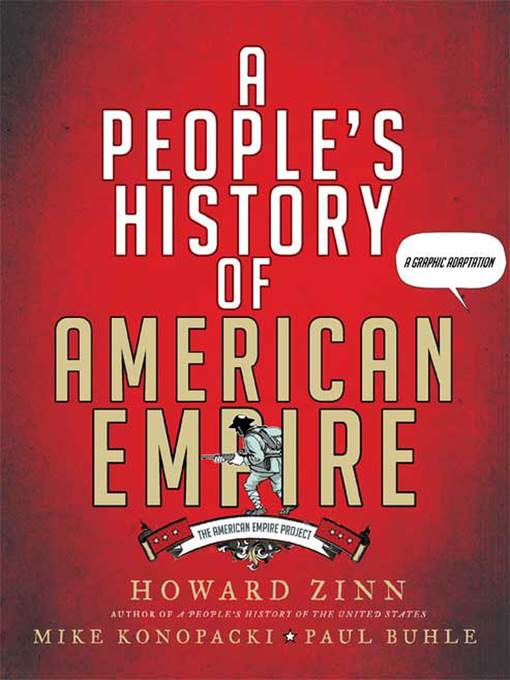
A People's History of American Empire
The American Empire Project, A Graphic Adaptation
کتاب های مرتبط
- اطلاعات
- نقد و بررسی
- دیدگاه کاربران
نقد و بررسی

March 31, 2008
This “graphic adaptation” of Howard Zinn's A People's History of American Empire
is, on almost every level, a disappointment. Its basic concept seems to be a Cliff's Notes version of the original, implying that the comics format makes information more accessible, without realizing that perhaps information might be lost in the process. The problems begin with introducing a caricature of Zinn as the narrator. We see Zinn at a podium, speaking the text of his book. One might suppose Zinn is an eccentric old professor, and this caricature does him no favors. From there the caricatures continue. Weakly rendered versions of American figures follow: the artwork by Konopacki resembles a high school yearbook artist's “humor” drawings. None of this would be quite so offensive if it wasn't such a squandered opportunity. Historical and polemical comics can be done well (James Sturm, Jack Jackson, Joe Sacco and others are masters of it), but when the artwork detracts and the whole thing feels like a grade-school exercise, it's hard to take seriously. And that's too bad, as Zinn is an important voice. In this case, however, he's been silenced.

March 31, 2008
This \x93graphic adaptation\x94 of Howard Zinn's A People's History of American Empire is, on almost every level, a disappointment. Its basic concept seems to be a Cliff's Notes version of the original, implying that the comics format makes information more accessible, without realizing that perhaps information might be lost in the process. The problems begin with introducing a caricature of Zinn as the narrator. We see Zinn at a podium, speaking the text of his book. One might suppose Zinn is an eccentric old professor, and this caricature does him no favors. From there the caricatures continue. Weakly rendered versions of American figures follow: the artwork by Konopacki resembles a high school yearbook artist's \x93humor\x94 drawings. None of this would be quite so offensive if it wasn't such a squandered opportunity. Historical and polemical comics can be done well (James Sturm, Jack Jackson, Joe Sacco and others are masters of it), but when the artwork detracts and the whole thing feels like a grade-school exercise, it's hard to take seriously. And that's too bad, as Zinn is an important voice. In this case, however, he's been silenced.

March 15, 2008
Leftist historian Zinn extracts from his evergreen A Peoples History of the United States (1980), recruits foursquare labor cartoonist Mike Konopacki to gussy it up graphically, and voil! A very good-looking (because historical photos are incorporated into the visual flow), engrossing, informative nonfiction graphic novel is born. The theme, imperialism, is closely adhered to, though the decision to begin after the Civil War ignores the first seven decades of U.S. land grabbing and scheming to get public money into private pockets. Uncomfortable truths are told about every U.S. war and military intervention since, the ongoing suppression of the Indians is well covered, and the baleful role of big money is reliably pointed out. How the civil-rights struggle relates to imperialism per se isnt explained, however, and Zinns zeal for revolution (he scolds President Cleveland, who refused to attack Spain in Cuba, for not then supporting the Cuban rebels) makes it plain that this is an anti-imperialist, not an antiarmed aggression, history.(Reprinted with permission of Booklist, copyright 2008, American Library Association.)

























دیدگاه کاربران